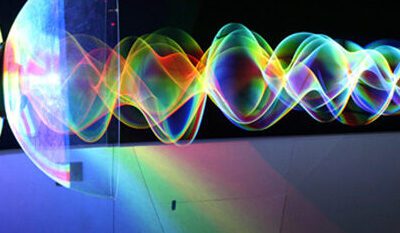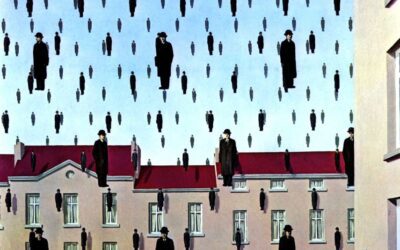An Interview with Dr. Madeline Eckenrode The U.S. healthcare system is broken in many ways, leaving millions of Americans un- or under-insured and unable to access the care they need. This is especially true in states like Alabama that have not expanded Medicaid under the Affordable Care Act. In an eye-opening interview on the Taproot Therapy Collective podcast, hosts Joel Blackstock and Haley Beech speak with Dr. Madeline Eckenrode, a primary care physician at the University of Alabama at Birmingham (UAB),...
On Intuition and Trauma:
Neurobiological Intersections and Mistaken Identities Intuition vs. Trauma One of the most common questions that I get as a trauma therapist is "How do you deal with all the crazy people that believe (insert X here) about politics, religion and conspiracy theories. It's a fair question because I work by connecting patients back to their empowered intution and teaching them to tell the difference between it and their own unconcious trauma and the avvoidance and biases itt creates. People are often shockesd to hear...
Addressing Conduct Disorders with Micronutrient Therapy:
Hardy Nutritionals' Daily Essential Nutrients Approach for Conduct Disorder Conduct disorders represent one of the most challenging behavioral conditions in child and adolescent psychiatry, often characterized by persistent patterns of antisocial behavior, aggression, and violation of social norms. Traditional treatment approaches typically involve behavioral interventions and sometimes medication, but emerging research suggests that nutritional factors may play a more significant role than previously...
Nutritional Support for Prader-Willi Syndrome
Exploring Hardy Nutritionals' Daily Essential Nutrients for Prader-Willi Syndrome Prader-Willi Syndrome (PWS) is a complex genetic disorder that presents numerous challenges for affected individuals and their caregivers. Among these challenges, nutrition management stands as one of the most critical aspects of care. While conventional dietary approaches focus primarily on caloric restriction and macronutrient composition, emerging evidence suggests that micronutrient status may also play an important role in...
Nutritional Support for Brain Injury Recovery and TBI:
Emerging Evidence and Clinical Applications for Nutrition and TBI Traumatic brain injury (TBI) represents one of the most significant challenges in modern healthcare, with profound implications for cognitive function, emotional regulation, and overall quality of life. While conventional rehabilitation approaches remain essential, growing evidence suggests that targeted nutritional interventions may enhance recovery processes and potentially improve long-term outcomes. The Dictionary of Supplements and Herbs for...
Nutritional Approaches to Managing Aggression:
Emerging Research and Clinical Applications for Supplements for Aggression and Anger Aggression represents a complex behavioral pattern influenced by a multitude of neurobiological, psychological, and environmental factors. While pharmacological interventions remain the standard treatment for pathological aggression, growing evidence suggests that nutritional factors may play a significant role in both the development and management of aggressive behaviors. The Dictionary of Supplements and Herbs for mental...
Nutritional Approaches to Managing Antenatal and Postpartum Depression
Nutritional Approaches to Managing Pregnancy and Depression Antenatal depression affects approximately 7-20% of pregnant women worldwide, creating significant challenges for both maternal and fetal health. While conventional treatments remain essential, growing evidence suggests that nutritional interventions may play a supportive role in managing depressive symptoms during pregnancy. The Dictionary of Supplements and Herbs for mental health provides a comprehensive overview of natural supplements that may...
Natural Approaches to Managing Hyperactivity:
Explore evidence-based natural approaches to managing hyperactivity, including omega-3 fatty acids, zinc, magnesium, and herbal remedies like ginseng and pine bark extract. This comprehensive guide examines the research behind supplements, herbs, and complementary approaches for hyperactivity symptoms, offering insights into their effectiveness and safety considerations.
Natural Remedies for Insomnia:
The Science Behind Supplements and Herbs for Better Sleep Sleep is essential for our physical and mental well-being, yet insomnia affects millions of people worldwide. While conventional sleep medications can be effective, they often come with unwanted side effects and the risk of dependency. As a result, many individuals are turning to natural alternatives to improve their sleep quality. This comprehensive guide examines the scientific evidence behind various supplements and herbs that may help address insomnia,...
Evidence-Based Natural Approaches to Phobia Treatment
The Science of Phobias and Evidence-Based Natural Approaches to Treatment Phobias represent one of the most common anxiety disorders worldwide, affecting approximately 10% of the population at some point in their lives. Unlike ordinary fears, phobias involve excessive, persistent fear of specific objects, situations, or activities that pose little or no actual danger. The resulting distress and avoidance behaviors can significantly impact daily functioning and quality of life, from limiting career opportunities...









